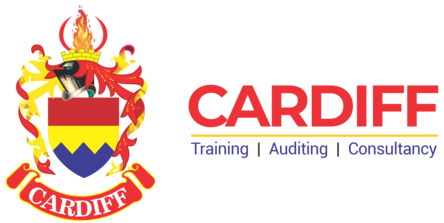
When you are examining a topic or issue, for example one of the ‘elements’ as outlined in the NEBOSH guidance, make sure that you critically evaluate that element. This means that you have to find out what the particular element is concerned with. You have to understand the standard or standards that might apply and you have to collect evidence to demonstrate the actual practices in your workplace. You then have to make objectives judgments about how actual practice matches the standard that might be expected with a view to highlighting strengths and weaknesses. So if you make very subjective and personal sweeping statements about behavior without any reference to what the standards of personal behavior should be you will not win the marks. If you identify what the standards should be but fail to present any evidence as to what is currently happening you will not win good marks.
Professional, objective, ethical
The examiner does not want to know who you like and who you don’t like. They do not want to know company gossip. They do not want to see sweeping emotive generalizations with no basis in fact. They want a professional report that is built on a solid foundation of objective evidence presented through the lens of a safety practitioner working to the ethical standards espoused by their chosen professional body (such as IOSH or IIRSM).
Make a strong impression
They say that first impressions count, and the introduction to your assignment is no different! Your introduction should clearly set out your aims and objectives, which will help orientate the reader as well as keeping you on track. A good introduction will also help when it comes to writing your conclusion, providing you with a clear benchmark of objectives to refer back to and evaluate your success. Your introduction should also include a clear description of your methodology, including your methods of research, as well as providing a description of your chosen organization or workplace in order to set the context for the assignment. This should include the size and nature of the organization, the employment profile, the work patterns and production schedules employed, as well as any special situations that are likely to have an impact on health and safety. If you have chosen a very large company (see point 1) you should also state which department or division you will be looking at. You are also required to outline legislation and case law relevant to the organization and this can be included in your introduction. However, remember you are being marked on your ability to put these in the context of the development of an effective health and safety management program. An exhaustive list of statutes, regulations etc. is not expected.
Know your Hazards
As part of the assignment, you are required to identify at least 15 significant hazards from across a range of categories and prioritize them. You can then justify the choice of each hazard by using a system to assign levels of importance to each of the hazards identified. Remember: A full risk assessment is not needed on each hazard. Once you have identified these hazards (which should be across a range of categories relevant to the organization), you then need to prioritize two as being high priority – one physical hazard and the other relating to health and welfare.
Specify Risks
The risk assessments that are required for the unit must be completed on the chosen hazards you have previously identified. You then need to evaluate the effectiveness of the organization in controlling the risks and offer proposals to further control the hazard and reduce the risks – be sure to make use of any existing data for hazards that have already been quantified, for example noise control.
CONCLUSION
Summing up
It almost goes without saying, but your conclusion should offer a concise summary of your findings in the main body of the assignment – this is not the time to introduce any new ideas! A good conclusion should start by referring back to the aims and objectives you set out at the beginning of your assignment, evaluating how well they were achieved. The rest of the conclusion should follow on logically from the findings in the main body, being sure to cover every finding in the main assignment. A good tip is to print out a rough copy of the assignment and highlight all of your findings – that way you can be sure you don’t miss any.


